Electromagnetism Resource
4. Electromagnetic Effects
4.1. Magnetic Fields of Single Wires and Coils
Moving charges create a magnetic field. In particular, an electric current flowing in a wire generates a magnetic field.
The law that describes the Biot-Savart Law (bee-o savar).
Right-Hand Grip Rule (Side-On)
A current in a particular direction in a long, straight wire will generate a circular magnetic field, as shown below.
The direction of the magnetic field is given by the right-hand grip rule.
A current flowing in the direction shown by your thumb will generate a magnetic field that curls in the same direction as your fingers. Two "side on" views are shown below, with the way the right hand showing the direction of the field lines.
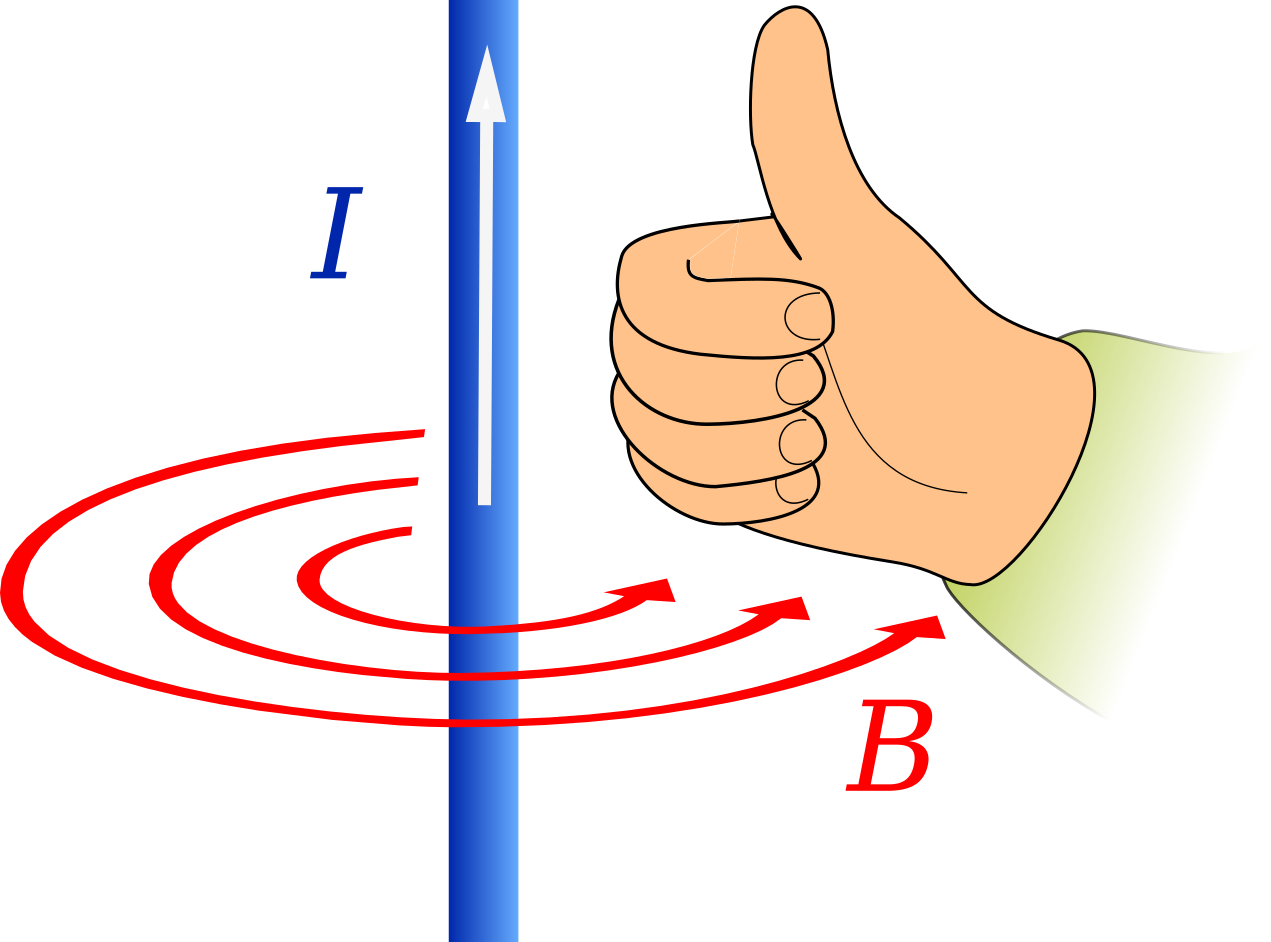
The magnetic field lines depend directly on the direction of the current. If the direction of current is reversed, the magnetic field lines also reverse direction.
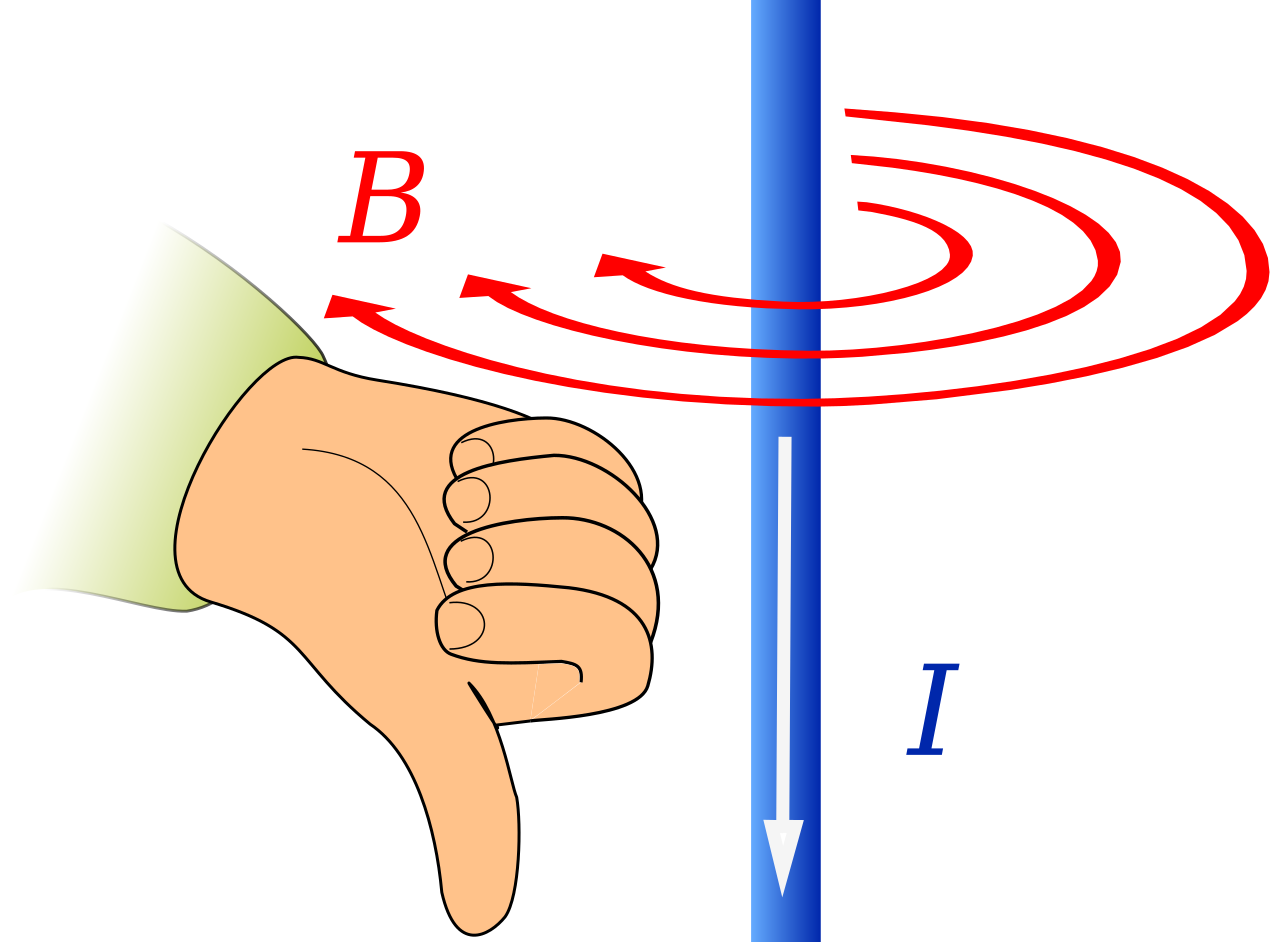
Calculating the Magnetic Field Around a Single Wire
The magnitude of the magnetic field around a long, straight wire is given by:
\( B = \frac{\mu_0 \mu_{\mathrm{r}} I}{2 \pi r} \)
where \( B \) is the magnetic field (T), \( \mu_0 \) is the permeability of free space, \( \mu_{\mathrm{r}} \) is the relative permeability, I is the current (A), and \( r \) is the radial distance from the centre-line of the wire (m).
For the magnetic field of a wire in air, \( \mu_{\mathrm{r}} = \) 1.
Right-Hand Grip Rule (End-On)
The direction of the current and magnetic field can also be shown "end on".
The current is thought of as going either directly towards you, or directly away from you.
The symbol is chosen by analogy with an arrow.
The symbol "\( \odot \)" means the current is flowing towards you.
The symbol "\( \otimes \)" means the current is flowing away from you.
The two images below show the magnetic fields around the wires with these different directions of current.
Current going towards you (\( \odot \)). Your thumb points towards you. The fingers on your right hand will curl anticlockwise as you look at them.
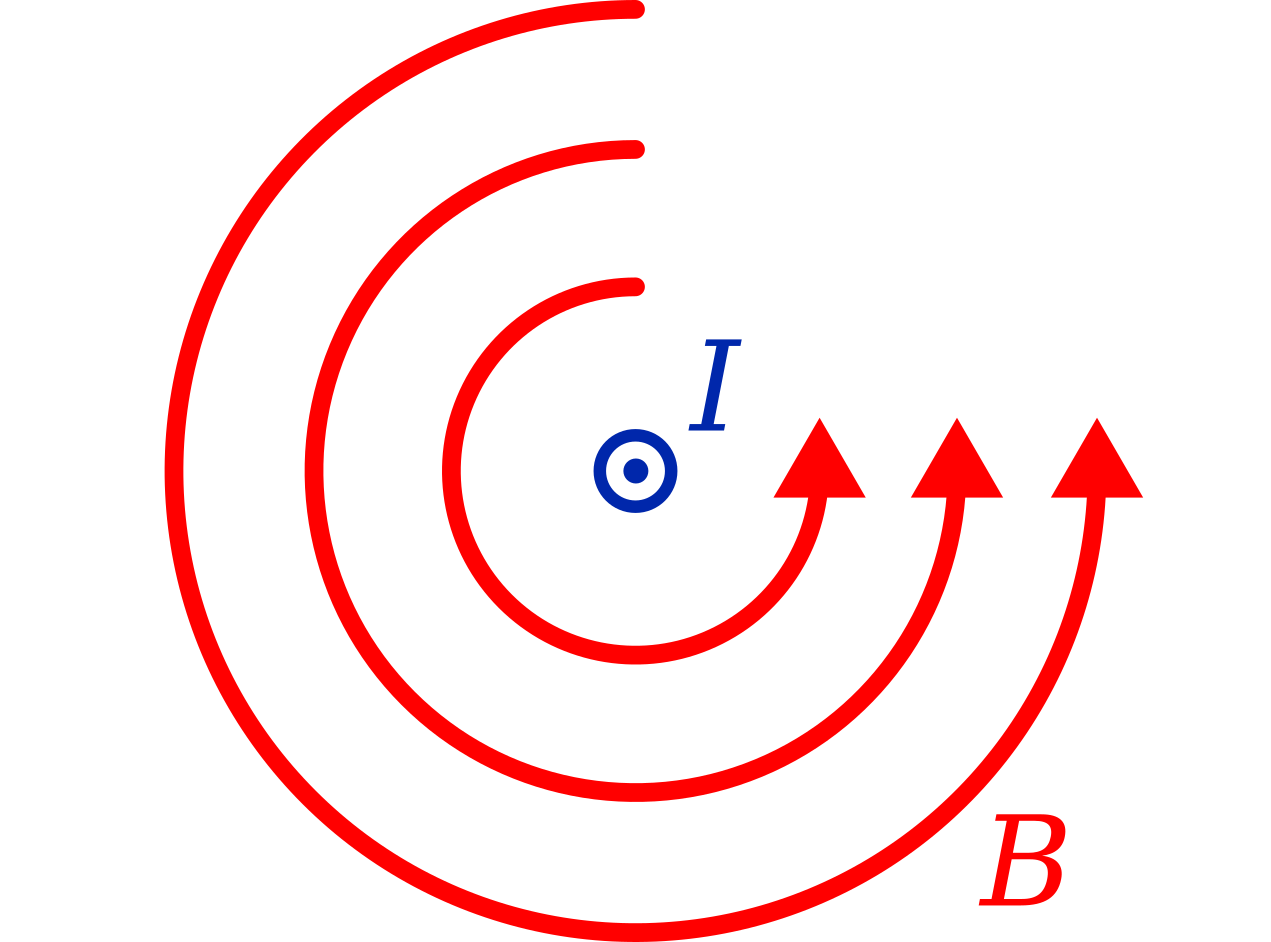
Current going away from you (\( \otimes \)). Your thumb points away from you. The fingers on your right hand will curl clockwise as you look at them.
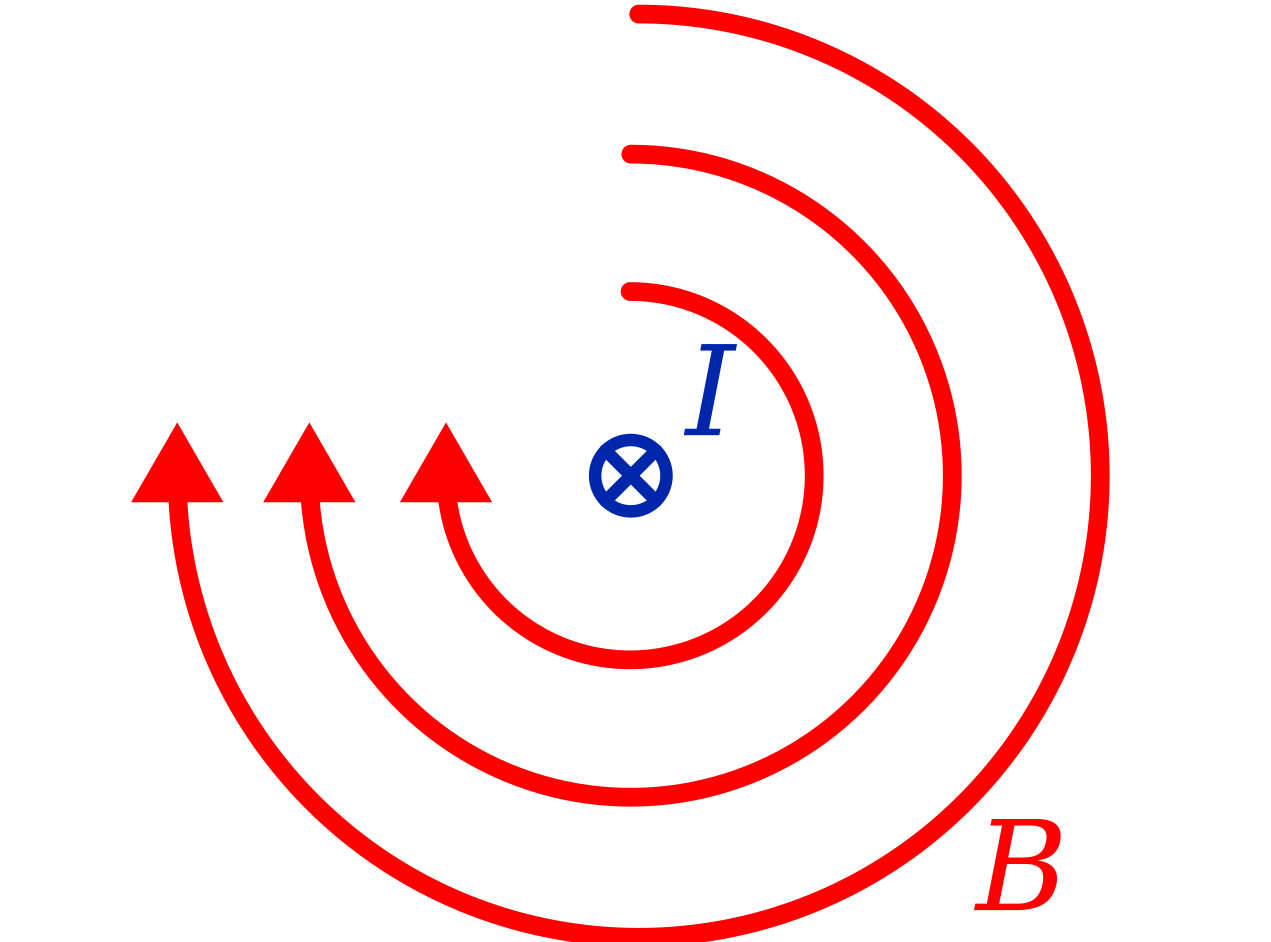
Observing the Magnetic Field Around a Wire (Side-On)
It is possible to use a compass to see the magnetic field around a current-wire.
The compass needle will be deflected as shown below.
The compass needle is always at right angles to the wire (notwithstanding any other strong magnetic fields that might disturb the compass needle).
The two images below show two compasses. One compass is placed below the wire, and the other compass is placed above the wire. The compass needles will point in the directions shown.
Since the magnetic field is circular, compasses placed on opposite sides of the wire will point in opposite directions.
The directions themselves are predicted using the right-hand rule.
The needle directions for the current travelling "upwards" is shown below.

The needle directions for the current travelling "downwards" is shown below.
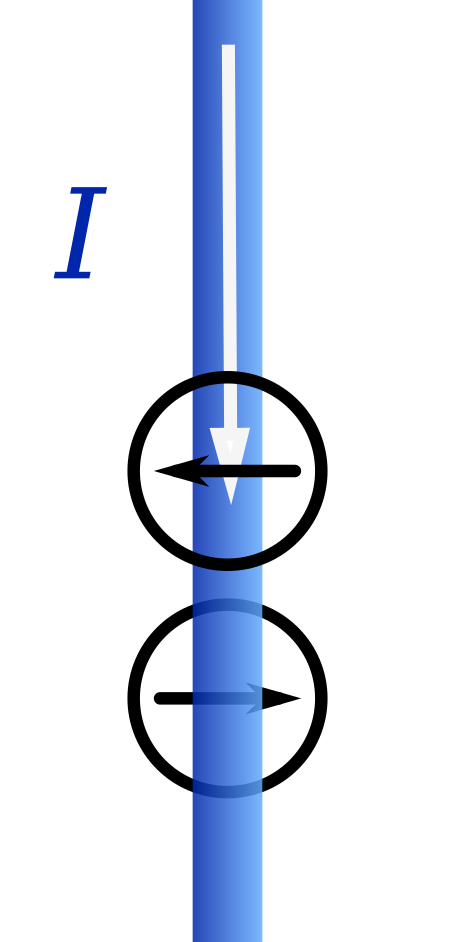
Observing the Magnetic Field Around a Wire (End-On)
The magnetic field around a wire can be observed by various means, including:
- placing iron filings on a sheet of paper at right angles to the wire; and
- using compasses.
The magnetic field is circular, with the direction given using the right-hand rule.
The picture below shows iron filings placed on a sheet of paper with a current carrying wire passing through it. The filings are aligning themselves in rings.
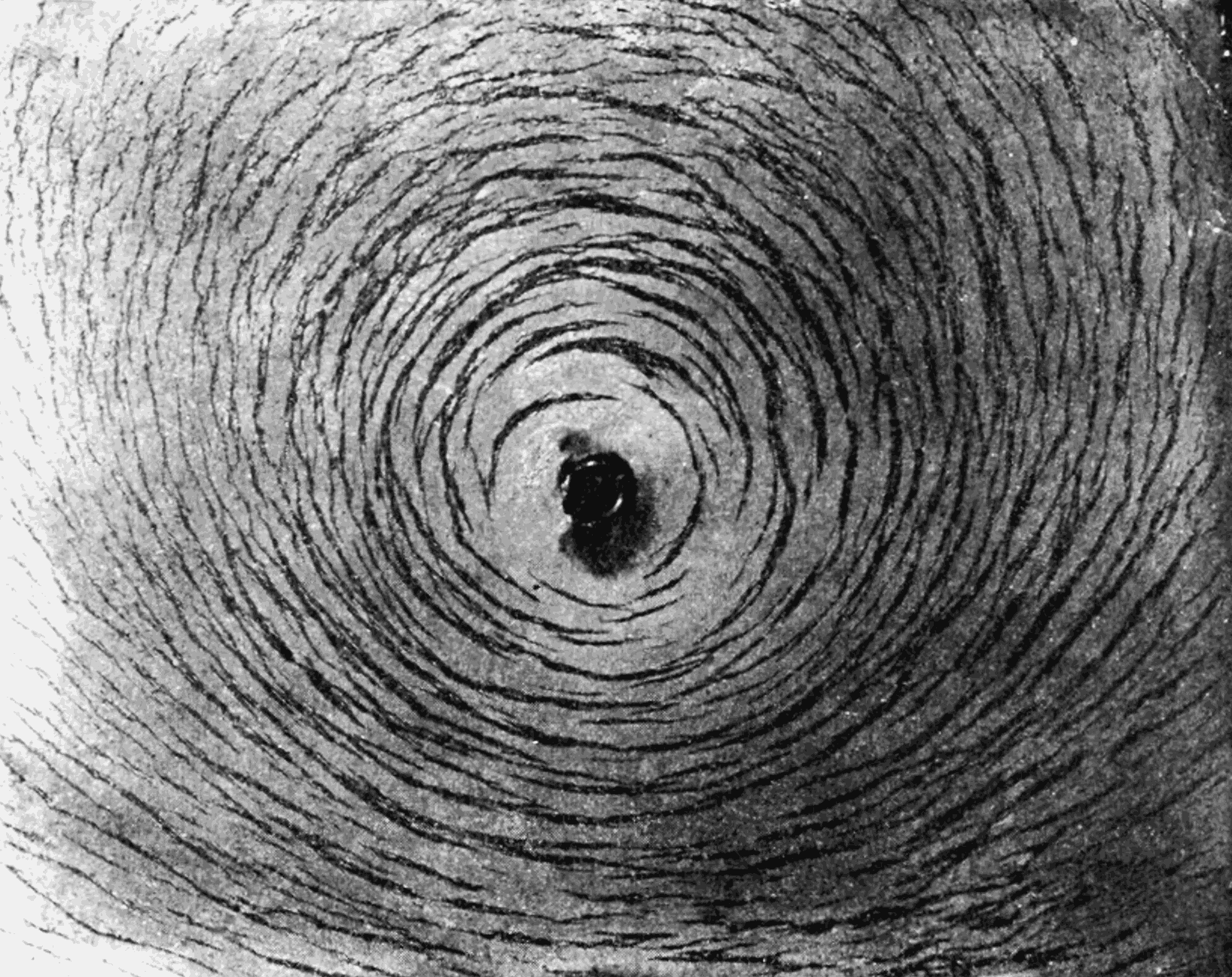
placing compasses around a current-carrying wire, like in the diagram below. The wire is carrying current directly towards you. The compasses show the direction of the magnetic field around the wire.
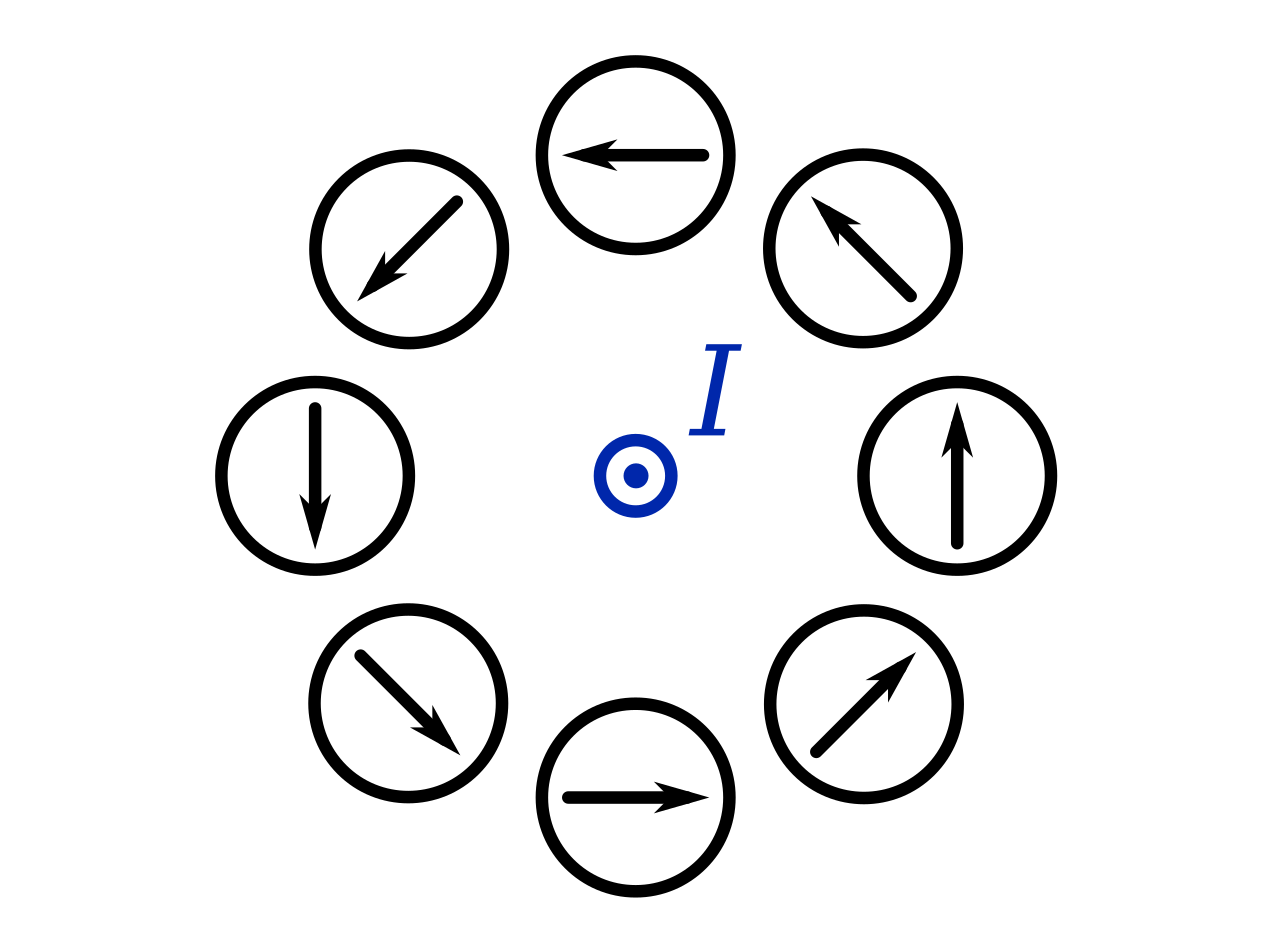
The same diagram for a current going away from you is shown below.
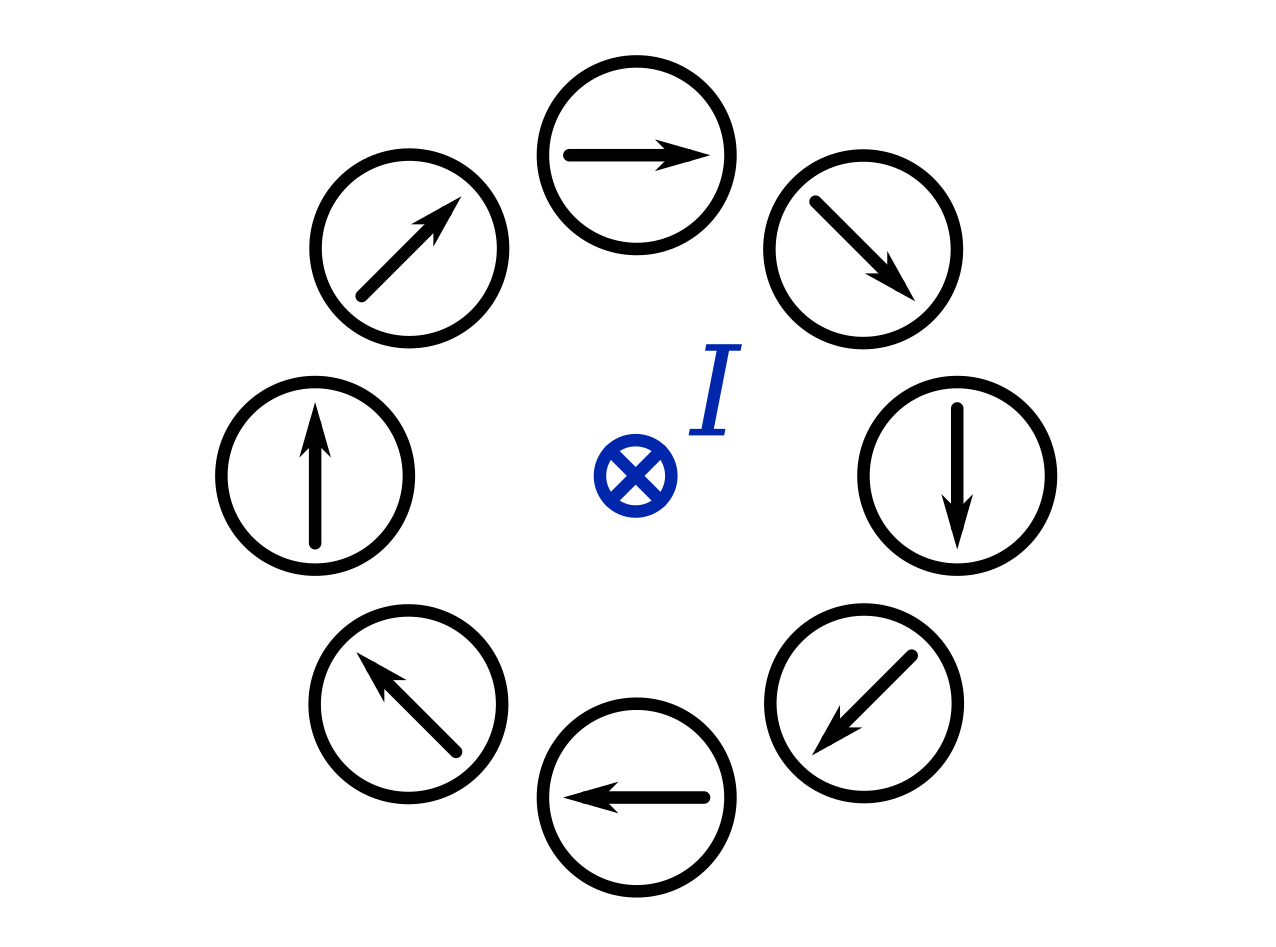
Magnetic Fields of Electromagnets
The direction of the magnetic field of an electromagnet is found using the right hand grip rule in reverse.
The fingers curl in the direction of the current, and the thumb points in the direction of the magnetic field in the centre of the coil. Or, as shown below, the thumb points towards the north pole.
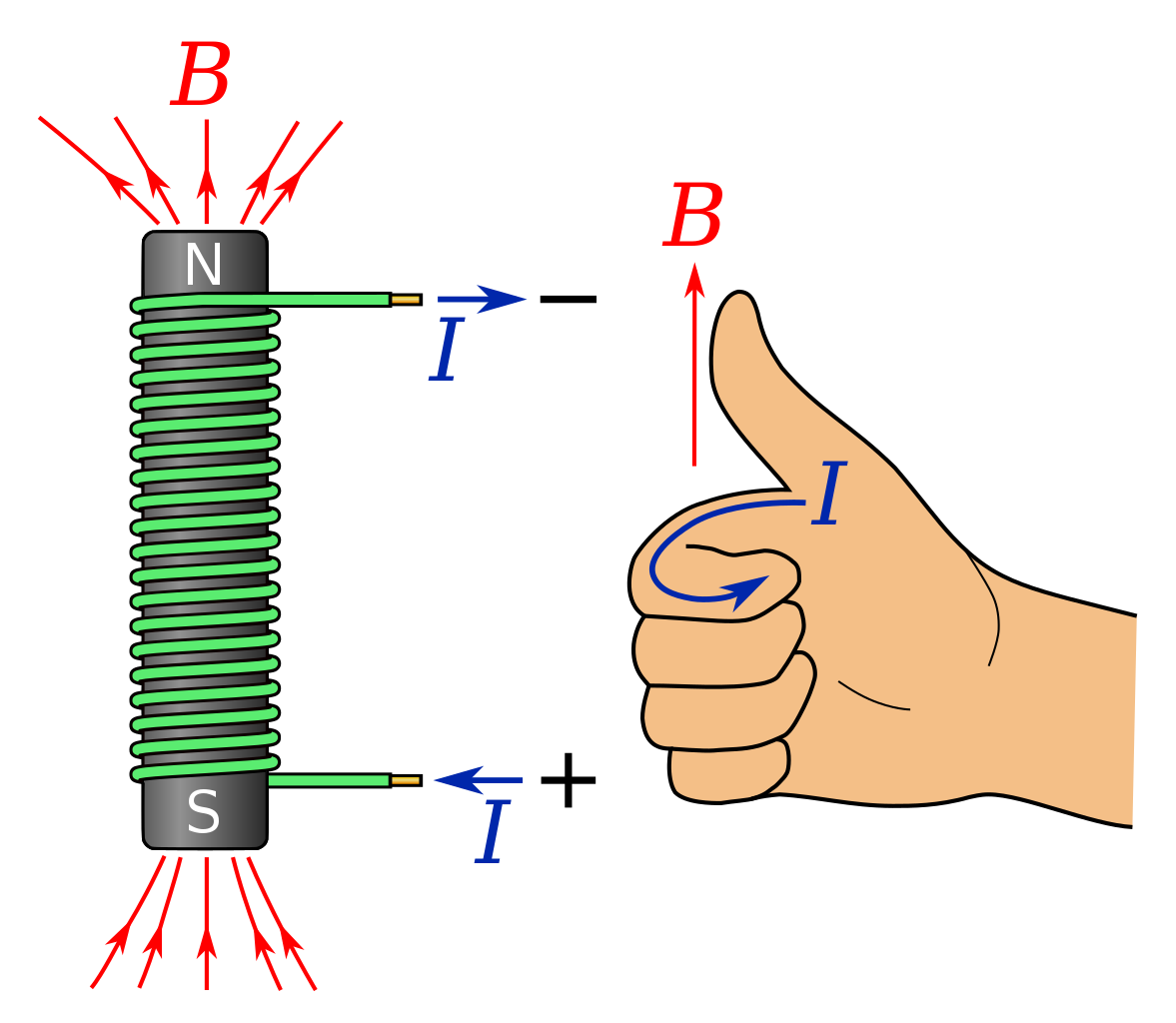
Another way of viewing the magnetic field is to look at the solenoid in section as below. The solenoid has been "cut in half" lengthwise, so that every turn can be seen.
The dots represent a current coming towards you, and the crosses represent the current going away from you.
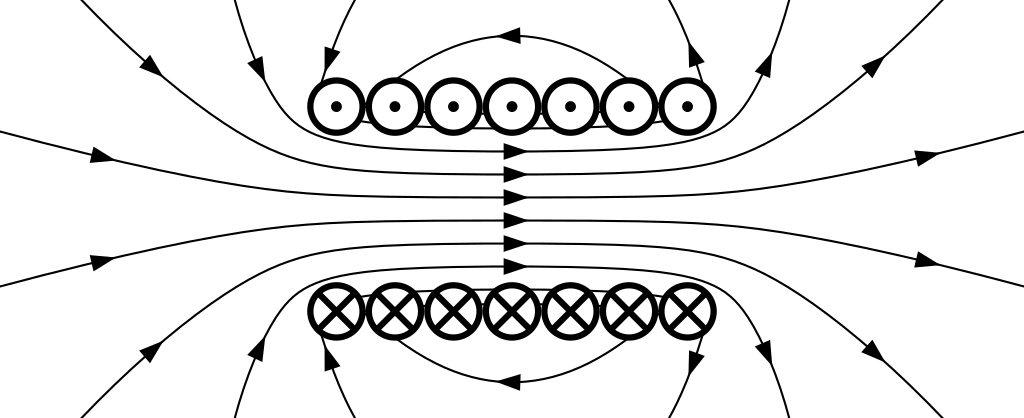
The magnetic field shown is the sum of the fields from each wire. The directions can be verified using the right hand grip rule on each turn, and checking they are the same as the direction of the total field.
Another method of remembering the magnetic poles in an electromagnet is shown below.
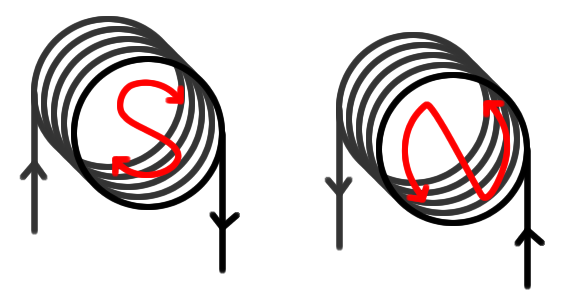
If the current flow is clockwise at the end of the coil, then the pole is a south pole at that end. If the current flow is anticlockwise at the end of the coil, then the pole is a north pole at that end.
NOTE: It is important to not confuse the direction of the current flow with the direction the coil is wound. The direction of current flow depends on the polarity of the voltage applied to the coil and the direction the coil is wound.